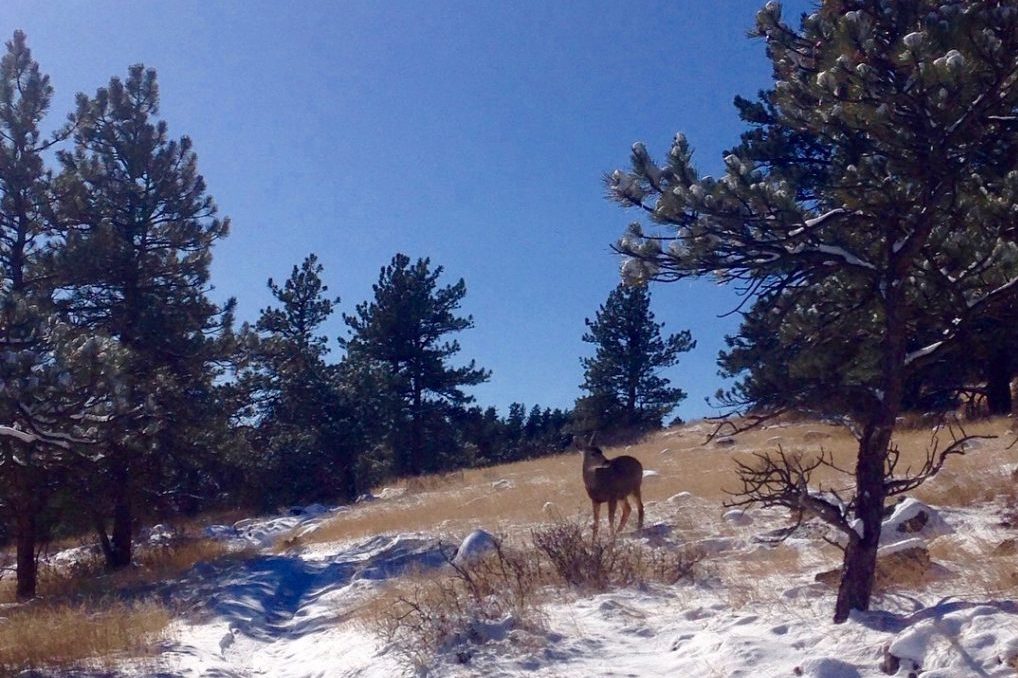Trail running offers us the freedom to run through the wilderness as we please, openly utilizing our cardiovascular and skeletal system as little or as great as we desire. We often feel like royalty and rulers of the trail, however, we aren’t the only breathing beings out there. Between wildlife and other pedestrians we must be mindful of our own rights as foot explorers of the natural world.
Be aware of the trail:
What is the first thing you do before you leave your house (or van) for a trail run? Pick a trail. Thus when choosing a trail you must also gain knowledge of where it is, what the elevation is like, terrain, weather conditions and the route. If you haven’t utilized the Trail Run Project as a resource, you may want to check it out. As an application you also have the ability to see the trail map on your phone even when there is no service in the wilderness. Most GPS watches also have the capability to reverse your route and lead you back to where you began. This is useful as a backup strategy, but if you’ve taken a look over the route and take note of natural or man made signs and markers, you should be a-ok!

Take a gander at those handy dandy maps at the trailhead too! They are provided for a reason! If one does not familiarize him or herself well enough with their environment, it could result in potential dangers. Getting lost, running off trail, being unaware of the distance and difficulty can lead you into harm’s way. When you put yourself in jeopardy, others on the trail will be affected, which could lead to necessary rescue, fright etc.
Stay to the right, pass on the left:
Whether it be a single track or an extra double wide trail, keep it consistent and stay to the right and pass on the left. Single track trails can lead to a bit of a shuffle or a hop off into the brush (be careful when taking steps off the trail, keep in mind the wildlife doesn’t want to be stepped on), but if we all keep this rule in mind, then human traffic will surely remain smooth and steady. If you’re coming up behind a walker, hiker, slower paced runner, uphill mountain biker, give them a holler to let them know you are “coming up on the left!” I have had a few experiences where I am coming up face to face with another runner and they hop to their left instead of right, here we then do a little dance around each other, stumbling on rocks and roots without grace. A little confused we pass each other and continue on our way.

On occasion when take a tight turn of a switchback or approaching a large boulder edging out on the trail, one runner will be racing toward the face of another. If staying to the right is in mind, you will be able to make the split second decision to stick right and both pass safely without any collision. This awkward or almost dangerous encounter that tends to happen anywhere, mostly in grocery stores, could very easily be avoided if every trailblazer takes on the mindset to “stay to the right, pass on the left.” Try not to startle your trail companions, sometimes we are stealthy and come up very quietly from behind.
Which leads me to…
Yield to those at a slower pace:
This recommended rule of the trail has some flexibility. Since a lot of trail users either communicate to one another when they cross paths or stop and then proceed to pass, yielding can vary person to person. However, if two trail runners were coming into contact going opposite ways on the trail, the faster runner should yield to the slower runner (same goes with hikers and walkers as well). This comes into play with horses as well, our four legged friends and riders have the right of way.
What about mountain bikers?
Mountain bikers are on bikes, runners are not. In the case of mountain bikers I always yield, whether that be for a biker coming up hill behind me, a biker going downhill the opposite way, or vise versa. However, the true trail rule is “to yield for those on foot,” meaning bikers should yield to any hikers or runners. I find that it is out of kindness and understanding that I prefer to allow the bikers to keep their momentum going. Most trail etiquette overlaps for mountain bikers and runners, especially yielding to the slower traffic. However, due to the fact that a bike is more difficult to stop than a runner on their feet (especially on an ascent or descent) my trail running rule is yield to mountain bikers.
Early bird gets the worm, but the night owl needs night eyes:
The saying holds to be true, if you get up and outdoors early you’ll find great pleasure from a sunrise and plenty of light! Taking to a trail when the sun is rising or once it has risen, gives you the safest opportunity for being able to see clearly, beat potential crowded locations, and my personal favorite, the wonderful rush of endorphins to follow and power you throughout the rest of your day.

Avoid entirely muddy trails:
If the weather has been particularly wet or a large rainstorm has washed over a trail, be respectful and find a new running location. Running on very muddy, wet terrain will damage the trail. A lot of time and manual labor is put into creating a trail system, we must keep them as healthy as possible. With that being said, if the trail is relatively dry and not wet to the point of damaging the overall condition, kick it through the muddy patches and get dirty!
Leave No Trace:
This is the simplest and one of the most crucial rules of the trail. Keep your fuel wrappers with you to dispose of after the run. Whatever you carried in, carry out. Seeing trash on the trail is an eye sore to those using it. Having to pick up the trash of others is not a task anyone is pleased to do, don’t add the stress to another kind runner that may have to carry it out for you. Tread lightly, don’t go off trail! The trail is constructed and maintained in order to preserve all wildlife surrounding it. Dispose of waste properly. And most importantly, respect the trail.














